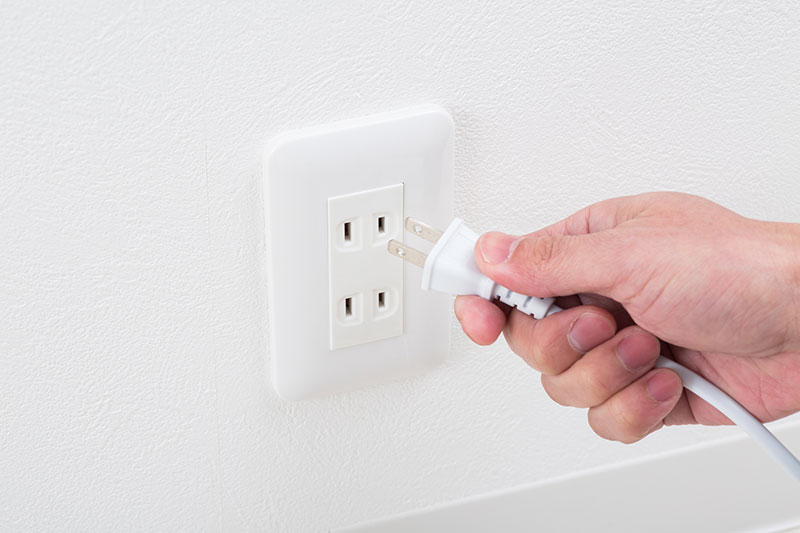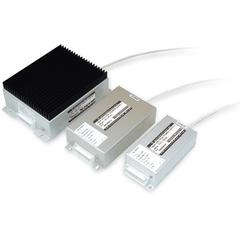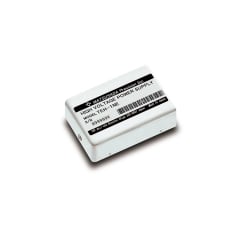
What is electric shock (electrical injury)?
Electric shock (electrical injury) occurs when an electric current flows through the human body, causing injury or a physiological reaction. Even the static electricity you feel when touching a doorknob in winter or taking off clothes is a mild form of electric shock. Some creatures, like the electric eel, electric catfish, and the electric ray (Torpediniformes), even generate electricity for hunting or defense.
An electric shock occurs when a person touches an energized wire or device, allowing electricity to flow through the body to the ground, or when touching two wires at different potentials simultaneously. With static electricity, clothing can build up a charg as the body moves. This charge then discharges (flows) from the fingertips through the object to the ground when the person tries to touch an object that conducts electricity, such as a doorknob.
Even if voltage is applied, an electric shock will not occur if no current flows. The ground (or earth) acts as a common return path for electrical current. This is why grounding wires (also known as earth wires or grounds) are installed to provide a safe path for fault currents in case of electrical leakage. Therefore, most electric shock accidents occur when electricity flows through the body to the ground.
The severity of an electric shock depends primarily on the amount of current (amperage) flowing through the body and the path it takes, rather than just the voltage. However, voltage is what drives the current (Ohm's Law). Even low voltages can be dangerous; fatal accidents have occurred with as little as 35V under certain conditions (such as when the skin is wet). One should never be complacent, even with low voltage..
If the current flowing through the body is between 1 and 5mA, the pain is about the same as static electricity. However, if the current is 50mA or more, it may cause death. According to the statistics on occupational accidents published by the Japanese Ministry of Health, Labor and Welfare, the number of fatalities and injuries due to electric shock in 2019 was 89, of which three people died.
Although workplace accidents involving electric shock are relatively infrequent, the risk of a fatal outcome is significant.
Effects of Electric Shock and First Aid
If an accident involving electric shock occurs, what will be the effects on the body? The effects on the body vary depending on the current's magnitude:
| 1mA | A tingling sensation |
|---|---|
| 5mA | Painful shock |
| 10mA | Loss of muscle control; may be unable to let go ("let-go" threshold) |
| 20mA | Violent muscle contractions; severe pain. Let-go becomes impossible. |
| 50mA | Ventricular fibrillation (rapid, irregular heartbeat) likely; death is possible. |
| 100mA | Ventricular fibrillation and cardiac arrest; fatal if not immediately treated. |
Burns are a primary type of injury from electric shock. The resistance of the human body is several kilohms, and heat is generated when the current flows. Since nerve signals are weak electric currents, nerve transmission can be interrupted, causing arrhythmia, cardiac arrest, and loss of consciousness.
This is especially dangerous when the skin is wet, as the electrical resistance of the skin is lowered, making it easier for electricity to flow into the body. This is one of the reasons why you should not touch electrical equipment with wet hands.
If you suffer an electric shock, especially with burns, seek immediate medical attention at a hospital. You may have internal injuries, trauma from the incident, or even dislocations or fractures from the violent muscle contractions.
If you see someone else receiving a shock, do not touch them directly. Touching a person during a shock will allow the current to flow through you as well, making you a part of the circuit and resulting in a "chain reaction" electrocution.
In 2015, a tragic accident occurred where multiple people were electrocuted in a chain reaction. When rescuing a person who has been electrocuted, turn off the circuit breaker or unplug the outlet to cut off the flow of electricity.
If the power cannot be shut off, never touch the person with your bare hands. Use a non-conductive object, such as a dry wooden board or a rubber mat, to push or pull the person away from the source.
How to prevent electric shock
Proper insulation is critical for preventing electric shock. Regularly inspect cords and other circuits for damage and perform routine maintenance.
Also, touching equipment with wet hands is dangerous as it may cause an electric shock through the water. Always use dry hands when handling electrical equipment. When working with or near high voltage, wearing appropriate Personal Protective Equipment (PPE) is mandatory. This typically includes using rubber insulating gloves (rated for the voltage you are working with) covered by leather protectors. The leather protectors are essential as they shield the rubber gloves from physical damage like cuts, abrasions, or punctures, which would compromise their critical insulating properties. Tools like insulated screwdrivers, which are coated with insulating resin, should also be used when working near energized components.
Proper grounding (earthing) is essential. For enhanced protection, install a ground-fault circuit interrupter (GFCI) (common in North America) or a residual-current device (RCD) (common in Europe and other regions). This will help prevent electric shock by providing a path for fault current to flow to the ground or by automatically shutting off the power when a leakage current is detected.
When performing construction or repairs, always use a voltage detector to confirm the circuit is de-energized before touching it. A voltage detector is a device used to confirm whether a circuit or target area is energized (live). It is used by placing the sensing part against the target area.
They can also be used on coated electric wires, and the type and shape vary depending on the voltage to be detected. Electric shock can be prevented by using a voltage detector to confirm that the area to be touched is not energized before working on it.
Electricity is invisible. Therefore, it is necessary to learn how to use it properly in order to prevent electric shock. In the field of electrical safety training, VR (Virtual Reality) is increasingly used to simulate electric shock scenarios and provide safety education on electricity.
About high-voltage electric shock
Standards such as IEC 60950-1 define hazardous voltage levels (often starting around 42.4 V AC peak or 60 V DC) where the risk of serious injury becomes significant. This is because high voltage can arc (jump) through the air to nearby conductive objects or people, similar to a lightning strike. You don't even need to touch the conductor to receive a shock.
In 2019, a student who climbed a steel tower was killed by an electric shock from a high-voltage power line. Also, the use of selfie sticks is banned on railroad station platforms because they can draw an arc from (or cause a discharge from) the overhead wires, leading to electric shocks. Electric (EV) and hybrid vehicles (HEV) also operate at high voltages, requiring special precautions during accidents or submersion.
The most reliable way to prevent high-voltage electric shock is to maintain a safe distance from energized components. Only authorized personnel should work on or near high-voltage energized sections. Unauthorized individuals must stay away. Use the interlock terminals and safety switches on the high-voltage power supply to immediately shut off the power if the cabinet door is opened or the safety barrier is breached.
Detailed information on the safe handling of our high-voltage power supplies can be found on the following page.
Related Technical Articles
Recommended products
Matsusada Precision manufactures various power supply equipment, including high-voltage power supplies with safety in mind.






